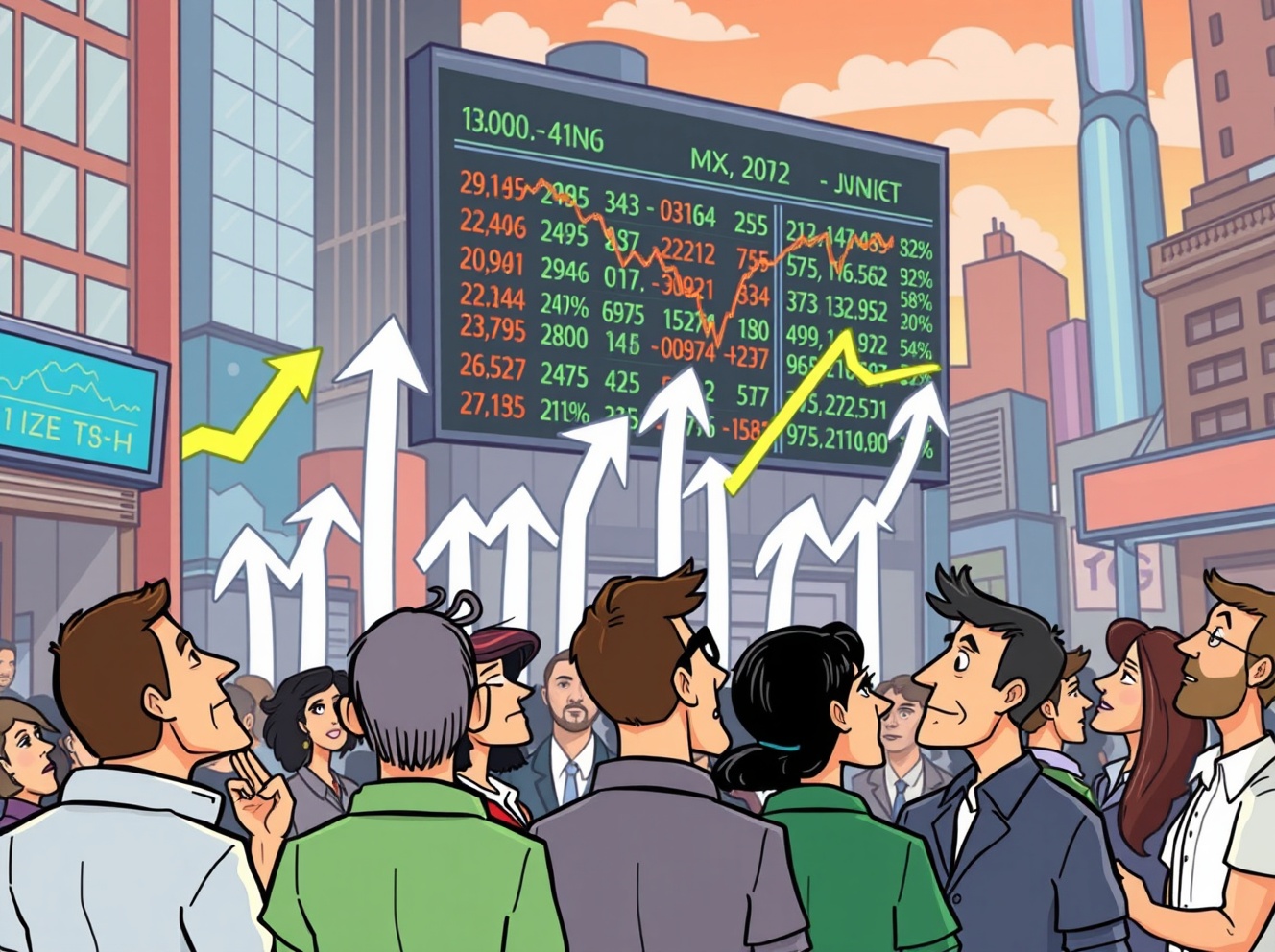Crucial US Stock Market Update: What Wednesday’s Mixed Close Reveals
BitcoinWorld
Crucial US Stock Market Update: What Wednesday’s Mixed Close Reveals
The financial world often keeps us on our toes, and Wednesday was no exception. Investors watched closely as the US stock market concluded the day with a mixed performance across its major indexes. This snapshot offers a crucial glimpse into current investor sentiment and economic undercurrents, prompting many to ask: what exactly happened?
Understanding the Latest US Stock Market Movements
On Wednesday, the closing bell brought a varied picture for the US stock market. While some indexes celebrated gains, others registered slight declines, creating a truly mixed bag for investors.
- The Dow Jones Industrial Average showed resilience, climbing by a notable 0.57%. This positive movement suggests strength in some of the larger, more established companies.
- Conversely, the S&P 500, a broader benchmark often seen as a barometer for the overall market, experienced a modest dip of 0.1%.
- The technology-heavy Nasdaq Composite also saw a slight retreat, sliding by 0.33%. This particular index often reflects investor sentiment towards growth stocks and the tech sector.
These divergent outcomes highlight the complex dynamics currently at play within the American economy. It’s not simply a matter of “up” or “down” for the entire US stock market; rather, it’s a nuanced landscape where different sectors and company types are responding to unique pressures and opportunities.
Why Did the US Stock Market See Mixed Results?
When the US stock market delivers a mixed performance, it often points to a tug-of-war between various economic factors. Several elements could have contributed to Wednesday’s varied closings.
For instance, positive corporate earnings reports from certain industries might have bolstered the Dow. At the same time, concerns over inflation, interest rate policies by the Federal Reserve, or even global economic uncertainties could have pressured growth stocks, affecting the S&P 500 and Nasdaq.
Key considerations often include:
- Economic Data: Recent reports on employment, manufacturing, or consumer spending can sway market sentiment.
- Corporate Announcements: Strong or weak earnings forecasts from influential companies can significantly impact their respective sectors.
- Interest Rate Expectations: The prospect of higher or lower interest rates directly influences borrowing costs for businesses and consumer spending, affecting future profitability.
- Geopolitical Events: Global tensions or trade policies can introduce uncertainty, causing investors to become more cautious.
Understanding these underlying drivers is crucial for anyone trying to make sense of daily market fluctuations in the US stock market.
Navigating Volatility in the US Stock Market
A mixed close, while not a dramatic downturn, serves as a reminder that market volatility is a constant companion for investors. For those involved in the US stock market, particularly individuals managing their portfolios, these days underscore the importance of a well-thought-out strategy.
It’s important not to react impulsively to daily movements. Instead, consider these actionable insights:
- Diversification: Spreading investments across different sectors and asset classes can help mitigate risk when one area underperforms.
- Long-Term Perspective: Focusing on long-term financial goals rather than short-term gains can help weather daily market swings.
- Stay Informed: Keeping abreast of economic news and company fundamentals provides context for market behavior.
- Consult Experts: Financial advisors can offer personalized guidance based on individual risk tolerance and objectives.
Even small movements in major indexes can signal shifts that require attention, guiding future investment decisions within the dynamic US stock market.
What’s Next for the US Stock Market?
Looking ahead, investors will be keenly watching for further economic indicators and corporate announcements to gauge the direction of the US stock market. Upcoming inflation data, statements from the Federal Reserve, and quarterly earnings reports will likely provide more clarity.
The interplay of these factors will continue to shape investor confidence and, consequently, the performance of the Dow, S&P 500, and Nasdaq. Remaining informed and adaptive will be key to understanding the market’s trajectory.
Conclusion: Wednesday’s mixed close in the US stock market highlights the intricate balance of forces influencing financial markets. While the Dow showed strength, the S&P 500 and Nasdaq experienced slight declines, reflecting a nuanced economic landscape. This reminds us that understanding the ‘why’ behind these movements is as important as the movements themselves. As always, a thoughtful, informed approach remains the best strategy for navigating the complexities of the market.
Frequently Asked Questions (FAQs)
Q1: What does a “mixed close” mean for the US stock market?
A1: A mixed close indicates that while some major stock indexes advanced, others declined. It suggests that different sectors or types of companies within the US stock market are experiencing varying influences, rather than a uniform market movement.
Q2: Which major indexes were affected on Wednesday?
A2: On Wednesday, the Dow Jones Industrial Average gained 0.57%, while the S&P 500 edged down 0.1%, and the Nasdaq Composite slid 0.33%, illustrating the mixed performance across the US stock market.
Q3: What factors contribute to a mixed stock market performance?
A3: Mixed performances in the US stock market can be influenced by various factors, including specific corporate earnings, economic data releases, shifts in interest rate expectations, and broader geopolitical events that affect different market segments uniquely.
Q4: How should investors react to mixed market signals?
A4: Investors are generally advised to maintain a long-term perspective, diversify their portfolios, stay informed about economic news, and avoid impulsive decisions. Consulting a financial advisor can also provide personalized guidance for navigating the US stock market.
Q5: What indicators should investors watch for future US stock market trends?
A5: Key indicators to watch include upcoming inflation reports, statements from the Federal Reserve regarding monetary policy, and quarterly corporate earnings reports. These will offer insights into the future direction of the US stock market.
Did you find this analysis of the US stock market helpful? Share this article with your network on social media to help others understand the nuances of current financial trends!
To learn more about the latest stock market trends, explore our article on key developments shaping the US stock market‘s future performance.
This post Crucial US Stock Market Update: What Wednesday’s Mixed Close Reveals first appeared on BitcoinWorld.
You May Also Like

Milk Mocha ($HUGS): The Deflationary Meme Coin Turning Weekly Burns Into Investor Gold

Grayscale’s Crypto Large Cap Fund, Including BTC, ETH, XRP, ADA, Gets SEC Approval
